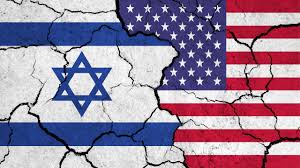
The State Department is weighing a landmark decision to allocate up to \$500 million in U.S. aid to the nascent Gaza Humanitarian Foundation (GHF), a move that would mark one of the largest direct transfers of U.S. government funds to the embattled territory since the outbreak of hostilities. Advocates within the administration argue the infusion is necessary to avert famine among Gaza’s 2.3 million residents, while critics warn that the foundation’s shaky distribution record and ties to private security contractors risk undercutting established aid networks and inflaming tensions on the ground.
A Strategic Pivot in U.S. Aid Policy
Under the proposed plan, funds originally overseen by the U.S. Agency for International Development (USAID) would be redirected to the new foundation, which has been rolled into the State Department’s budget envelope as part of a broader reorganization under the current administration’s “America First” doctrine. The shift reflects a deliberate effort to wrest control of Gaza’s humanitarian response away from the United Nations and large international NGOs, which U.S. officials say have failed to prevent aid from being diverted to Hamas. By channeling funds through a U.S.-backed vehicle, policymakers believe they can impose stricter accountability measures, deploy American logistics firms, and more closely monitor every dollar.
Yet the proposal has exposed deep divisions within Washington. Career diplomats and humanitarian specialists caution that bypassing veteran aid organizations could weaken long-standing distribution networks and fuel further chaos. Congressional aides note growing unease on Capitol Hill, where appropriators worry that sending such a large tranche to a group with no track record of large-scale operations amounts to a high-stakes gamble.
Since launching its first supply runs three weeks ago, the Gaza Humanitarian Foundation has encountered a series of operational headwinds. The foundation’s three distribution hubs have become flashpoints of violence, drawing crowds so large that they have spilled into adjacent military zones. In early June, at least 80 Palestinians were reported killed and hundreds more wounded by warning shots and live fire near GHF’s sites, according to hospital accounts. Observers say the chaos stems partly from insufficient crowd management protocols and a reliance on untested private security teams, which have struggled to coordinate with both Israeli forces and local volunteers.
GHF’s leadership has acknowledged the setbacks and suspended aid handouts twice to overhaul its procedures. However, internal turnover has been steep: several senior managers resigned amid allegations of mismanagement and reluctance to work under the new rules imposed by a U.S. contractor. Meanwhile, the foundation’s logistical spine—McNally Capital, a Chicago-based private equity firm with an “economic interest” in the security contractor—remains opaque, raising questions about profit motives in a deeply humanitarian sphere.
Political Imperatives Drive the Push
Proponents of the funding plan emphasize that the humanitarian stakes in Gaza are dire. An 11-week blockade that ended in mid-May cut off virtually all food, medicine, and fuel supplies, pushing a population already weakened by conflict to the brink of starvation. Senior U.S. officials insist that only a concentrated, American-led mechanism can deliver the scale of relief required in a timely manner.
At the same time, there are clear geopolitical incentives. The administration has sought to demonstrate a more assertive role in Middle East peace efforts, particularly after criticism that it ceded too much ground to rival powers in the region. By backing a homegrown aid foundation, Washington positions itself as a decisive force in Gaza relief—even as it continues to face calls for ceasefires and longer-term political solutions.
Israeli leaders, for their part, have quietly lobbied for the funding plan, viewing GHF as more reliable than United Nations agencies they accuse of turning a blind eye to smuggling tunnels and militant recruitment. In private consultations, Jerusalem has requested that U.S. support guarantee GHF operations for at least 180 days, a timeframe intended to bridge to a larger reconstruction effort once hostilities subside.
Concerns over Oversight and Neutrality
Despite the urgency, skeptics question GHF’s ability to uphold the impartiality and transparency that are hallmarks of humanitarian work. Major NGOs and UN relief chief offices have publicly criticized the foundation for operating under a tightly controlled security umbrella that limits independent verification. Without access for third-party monitors, some aid experts warn, there is an elevated risk of diversion or selective distribution—issues that, they argue, were never fully resolved under the previous aid regime.
Within State Department corridors, diplomats who spent careers negotiating access for international relief convoys worry that sidelining experienced NGOs will undercut years of relationship-building with local authorities and community leaders. They point to past incidents—such as the temporary shuttering of UN-run warehouses after allegations of tunnel-borne smuggling—as evidence that heavy-handed security measures do not guarantee better outcomes.
What Comes Next?
If approved, the funding would be one of the largest unilateral U.S. aid commitments to Gaza in recent memory, eclipsing prior grants routed through multilateral institutions. Officials say the money would flow in tranches, tied to rigorous performance audits and battlefield conditions on the ground. The foundation is expected to scale up to as many as ten distribution hubs within ninety days, using U.S.-contracted air and sea shipments to bypass local bottlenecks.
Critically, State Department leadership faces a race against time. With famine warnings intensifying and a broader reconstruction plan yet to materialize, any further delay risks catastrophic humanitarian fallout. Yet if the rollout falters—if violence erupts again at distribution points, or if audits uncover irregularities—the political and moral cost to Washington could be severe.
Inside the Beltway, lawmakers are preparing oversight hearings to scrutinize the arrangement. Should operations go smoothly, proponents predict the model could become a blueprint for future U.S.-led relief efforts in other high-risk zones. But if GHF fails to deliver at scale, the episode may reinforce calls to strengthen, rather than bypass, established humanitarian agencies—casting a long shadow over America’s role as a global donor.
(Source:www.theprint.in)
A Strategic Pivot in U.S. Aid Policy
Under the proposed plan, funds originally overseen by the U.S. Agency for International Development (USAID) would be redirected to the new foundation, which has been rolled into the State Department’s budget envelope as part of a broader reorganization under the current administration’s “America First” doctrine. The shift reflects a deliberate effort to wrest control of Gaza’s humanitarian response away from the United Nations and large international NGOs, which U.S. officials say have failed to prevent aid from being diverted to Hamas. By channeling funds through a U.S.-backed vehicle, policymakers believe they can impose stricter accountability measures, deploy American logistics firms, and more closely monitor every dollar.
Yet the proposal has exposed deep divisions within Washington. Career diplomats and humanitarian specialists caution that bypassing veteran aid organizations could weaken long-standing distribution networks and fuel further chaos. Congressional aides note growing unease on Capitol Hill, where appropriators worry that sending such a large tranche to a group with no track record of large-scale operations amounts to a high-stakes gamble.
Since launching its first supply runs three weeks ago, the Gaza Humanitarian Foundation has encountered a series of operational headwinds. The foundation’s three distribution hubs have become flashpoints of violence, drawing crowds so large that they have spilled into adjacent military zones. In early June, at least 80 Palestinians were reported killed and hundreds more wounded by warning shots and live fire near GHF’s sites, according to hospital accounts. Observers say the chaos stems partly from insufficient crowd management protocols and a reliance on untested private security teams, which have struggled to coordinate with both Israeli forces and local volunteers.
GHF’s leadership has acknowledged the setbacks and suspended aid handouts twice to overhaul its procedures. However, internal turnover has been steep: several senior managers resigned amid allegations of mismanagement and reluctance to work under the new rules imposed by a U.S. contractor. Meanwhile, the foundation’s logistical spine—McNally Capital, a Chicago-based private equity firm with an “economic interest” in the security contractor—remains opaque, raising questions about profit motives in a deeply humanitarian sphere.
Political Imperatives Drive the Push
Proponents of the funding plan emphasize that the humanitarian stakes in Gaza are dire. An 11-week blockade that ended in mid-May cut off virtually all food, medicine, and fuel supplies, pushing a population already weakened by conflict to the brink of starvation. Senior U.S. officials insist that only a concentrated, American-led mechanism can deliver the scale of relief required in a timely manner.
At the same time, there are clear geopolitical incentives. The administration has sought to demonstrate a more assertive role in Middle East peace efforts, particularly after criticism that it ceded too much ground to rival powers in the region. By backing a homegrown aid foundation, Washington positions itself as a decisive force in Gaza relief—even as it continues to face calls for ceasefires and longer-term political solutions.
Israeli leaders, for their part, have quietly lobbied for the funding plan, viewing GHF as more reliable than United Nations agencies they accuse of turning a blind eye to smuggling tunnels and militant recruitment. In private consultations, Jerusalem has requested that U.S. support guarantee GHF operations for at least 180 days, a timeframe intended to bridge to a larger reconstruction effort once hostilities subside.
Concerns over Oversight and Neutrality
Despite the urgency, skeptics question GHF’s ability to uphold the impartiality and transparency that are hallmarks of humanitarian work. Major NGOs and UN relief chief offices have publicly criticized the foundation for operating under a tightly controlled security umbrella that limits independent verification. Without access for third-party monitors, some aid experts warn, there is an elevated risk of diversion or selective distribution—issues that, they argue, were never fully resolved under the previous aid regime.
Within State Department corridors, diplomats who spent careers negotiating access for international relief convoys worry that sidelining experienced NGOs will undercut years of relationship-building with local authorities and community leaders. They point to past incidents—such as the temporary shuttering of UN-run warehouses after allegations of tunnel-borne smuggling—as evidence that heavy-handed security measures do not guarantee better outcomes.
What Comes Next?
If approved, the funding would be one of the largest unilateral U.S. aid commitments to Gaza in recent memory, eclipsing prior grants routed through multilateral institutions. Officials say the money would flow in tranches, tied to rigorous performance audits and battlefield conditions on the ground. The foundation is expected to scale up to as many as ten distribution hubs within ninety days, using U.S.-contracted air and sea shipments to bypass local bottlenecks.
Critically, State Department leadership faces a race against time. With famine warnings intensifying and a broader reconstruction plan yet to materialize, any further delay risks catastrophic humanitarian fallout. Yet if the rollout falters—if violence erupts again at distribution points, or if audits uncover irregularities—the political and moral cost to Washington could be severe.
Inside the Beltway, lawmakers are preparing oversight hearings to scrutinize the arrangement. Should operations go smoothly, proponents predict the model could become a blueprint for future U.S.-led relief efforts in other high-risk zones. But if GHF fails to deliver at scale, the episode may reinforce calls to strengthen, rather than bypass, established humanitarian agencies—casting a long shadow over America’s role as a global donor.
(Source:www.theprint.in)





